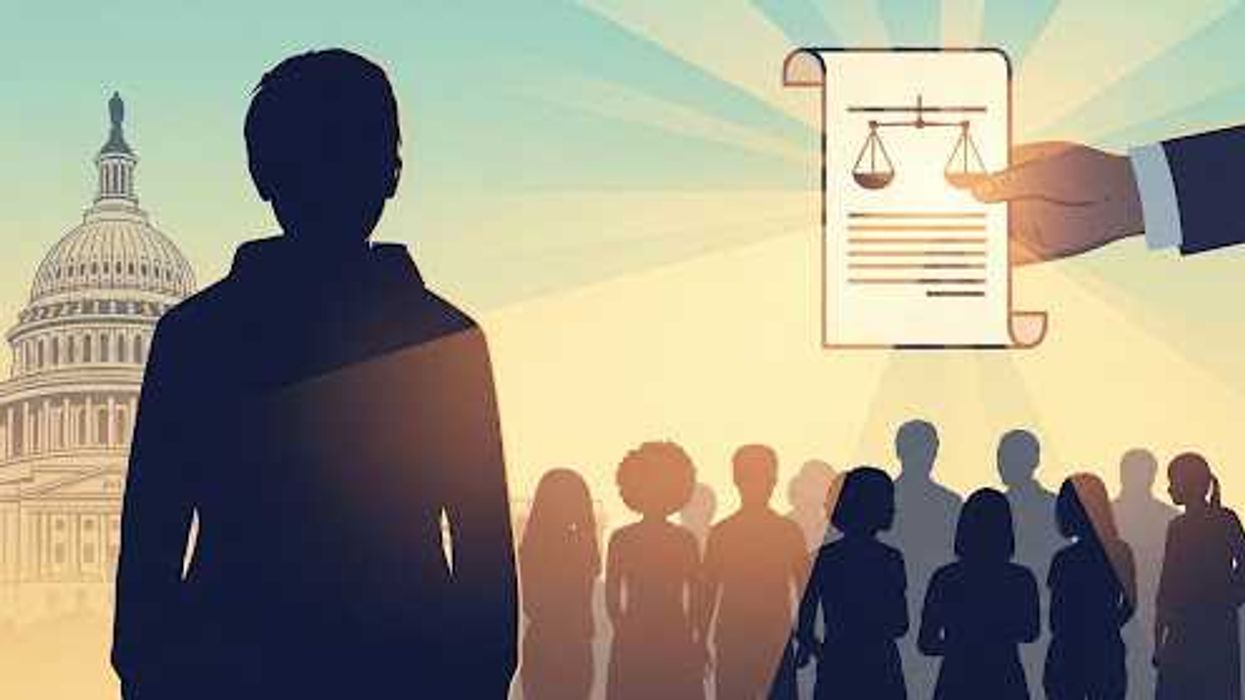“I pledge to defend my community against mass deportation!” 500 people chanted in unison, during the Northwest Side Progressives meeting at Roosevelt High School on Nov. 16.
Chicagoans are preparing to help their neighbors push back against Project 2025, the MAGA blueprint designed to guide President-elect Donald Trump in taking on immigration, abortion rights, environmental regulations and many progressive policies. Citizens and government officials outlined what local, state and federal actors can do to protect their communities.
The meeting was hosted by United Northwest Side, an independent political organization working to improve government transparency, end environmental racism, increase affordable housing, attain fair wages and better education, and make neighborhoods safer.
“I came because, like many people in my neighborhood, I was concerned about the outcome of the elections — it wasn’t what I was hoping for. I want to start focusing on things that I can do to take my own power back,” said Heather Bannon, a volunteer at the event.
During this public meeting, citizens divided into 10 breakout groups concerning immigration, housing, community safety, environment, gender justice, democracy, education, economic justice, health care and international security. With motivation and energy, attendees promised to get to work to fight back against what they consider an oppressive administration.
“People!” “Power!” “People!” “Power!” chanted the crowd, along with Cook County Commissioner Anthony Quezada, who represents the 8th district. “Due to the extremist nature of Trump’s far-right administration and their Project 2025 playbook, we must consider the safety and well-being of many communities,” he said.
Project 2025 is a conservative policy roadmap produced by the Heritage Foundation. The many proposals include mass deportation, weakening the FBI and Department of Justice, expanding non-renewable energy production, removing the Department of Education, and cutting government spending. Although Trump has distanced himself from Project Trump during the campaign, MAGA allies admitted after Trump won the White House on Nov. 8, that Project 2025 will be implemented. And a number of people Trump has tapped for roles in his administration were involved in developing Project 2025.
Illinois and Chicago are heavily Democratic and already have many policies in place they say protect people, including the codification of reproductive health care or sanctuary city status. Government officials promised they would continue working toward policies already underway, such as the earned income tax credit expansion, the child tax credit, protecting the immigrant community, expanding Medicaid, driver’s licenses for legal non-citizens, and the 1115 waiver.
“We’re setting a model of what a blue wave could look like and what a progressive agenda needs to be,” said Aquino.
The attendees sought to know how to fight back against Immigration and Customs Enforcement, especially in schools. The principal of Roosevelt High School, Daniel Kramer, testified that his students were traumatized by the election. Gayle Hammer, a teacher at DeWitt Clinton Elementary School, also expressed that some of her students feared Trump’s policies.
“One of my students was feeling sad because her parents told her they might have to move back to Venezuela,” said Hammer.
Schools are a safe space for students and ICE is not allowed inside, school administrators reminded the crowd. Moreover, they said, the Chicago Police Department should not have any communication with immigration authorities, a benefit gained from the sanctuary city status.
“Trump doesn’t care about laws or politics, and they’re going to go strong against immigrants,” said Mildred Ponce de Leon, an attendee. “So, do we have a plan to be there for those who will be rounded up?”
Local community organizations, especially the Illinois Coalition for Immigration and Refugee Rights and Palenque LSNA, are designing a roadmap on how to fight against mass deportation and protect individuals vulnerable to expulsion. Rapid response teams, community defense committees and a family support hotline are set up and will be further developed.
Breakout groups discussed how to continue ongoing programs with less federal funding, such as community policing, reproductive or gender-affirming care, and sustainable infrastructure. For example, they talked about Trump’s intent to privatize affordable housing, meaning the Department of Housing and Urban Development would decrease its allocation of funds.
“This will severely impact what is already a housing crisis,” said Fuentes. “We are watching individuals who are experiencing street-based homelessness and know families that are a paycheck away from homelessness, the more we privatize housing, the more we target our market towards the elite.”
Residents also raised concerns about the normalization of racism, misogyny and xenophobia within Trump’s Cabinet and among his supporters. The term “textbook fascism” came up multiple times to describe what a second Trump term would look like. Administrators reminded the attendees that they can still oppose and fight against this normalization on a local level.
Aside from laying out actions and measures Chicagoans can do to protect their neighbors, the main message of the meeting was one of unity and solidarity. Neighbors were hugging each other, elected officials were leading chants, and the attendees pledged to protect vulnerable communities.
“We have so much power in this room, and we have built that power from the bottom up!” said Ramirez Rosa.
Huot-Marchand is a graduate student at Northwestern University’s Medill School of Journalism.

































